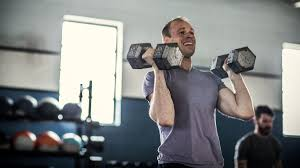20-Minute Daily Workouts for Busy Professionals
20-Minute Daily Workouts for Busy Professionals
Why Short Workouts Work
The biggest excuse professionals give for skipping fitness is lack of time. Long gym sessions sound ideal, but when your calendar is stacked with meetings, commutes, and deadlines, a one-hour workout rarely fits. The good news is that science shows 20 minutes of consistent, focused exercise is enough to improve cardiovascular health, build strength, reduce stress, and help manage chronic pain.
For busy professionals, these quick routines aren’t just efficient—they’re sustainable. And sustainability is what really drives results.
The Core of a 20-Minute Routine
When you only have 20 minutes, the goal is efficiency. That means picking movements that:
- Work multiple muscle groups at once
- Improve both strength and stamina
- Can be done anywhere—office, home, or hotel room
Think of it as a mini full-body reset. Here’s how you can structure it.
Warm-Up (3 minutes)
Skip this, and you’re asking for trouble. A simple warm-up gets blood flowing and prevents strain—especially important if you sit at a desk all day. Try:
- 30 seconds jumping jacks
- 30 seconds arm circles
- 1 minute high knees
- 1 minute dynamic stretches (hip circles, torso twists)
Strength + Cardio Combo (12 minutes)
Use a circuit format: 45 seconds per move, 15 seconds rest. Repeat the circuit twice.
- Push-ups – Strengthens chest, arms, and shoulders.
- Bodyweight Squats – Builds leg and core power.
- Plank with Shoulder Taps – Targets core stability and prevents back pain.
- Lunges – Strengthens hips and knees while improving balance.
- Burpees – A quick heart-rate booster to burn calories fast.
- Mountain Climbers – Core, cardio, and agility in one move.
Cool-Down & Stretch (5 minutes)
This is where you help your body recover. Gentle stretching reduces stiffness, especially in the shoulders, knees, and lower back—the main pain points for professionals who sit long hours.
- Chest opener stretch
- Quad and hamstring stretch
- Shoulder stretch (focus on left shoulder if you often feel tension there)
- Deep breathing
Addressing Pain and Stiffness
Now let’s be real. Professionals aren’t just short on time; they’re also dealing with pain from sitting, typing, or commuting. Quick workouts improve mobility, but recovery aids make the difference between consistency and burnout.
1. Shoulder Pain
If you’ve ever wondered about left shoulder pain reasons, common culprits include poor posture, long hours at the desk, or carrying heavy bags on one side. Sometimes it’s muscle strain; other times it’s early signs of impingement. Stretching plus short mobility drills—like shoulder rolls or wall angels—can ease this.
When discomfort lingers, using a Deep Penetrating Pain Relief Spray can offer targeted relief. It works fast, making it easier to stay consistent with your workouts instead of skipping them due to soreness.
2. Knee Pain
Squats and lunges are great, but for many desk workers, knee stiffness and mild pain show up quickly. Sitting tightens hip flexors, which puts more pressure on the knees.
Two solutions:
- Add mobility drills like leg swings and hamstring stretches.
- Support recovery with a knee pain relief cream. A quick massage post-workout improves blood flow, reduces inflammation, and keeps your lower body ready for the next day.
3. General Muscle Fatigue
Even with a 20-minute workout, your muscles might feel tight if you’re new to exercise or coming back after a break. Alternating between strength days and yoga/mobility days helps. For faster relief, sprays or creams with cooling and warming effects can reduce soreness without disrupting your schedule.
The Mind-Body Connection
It’s not just about physical health. Short workouts give busy professionals mental clarity. Just 20 minutes of movement:
- Lowers stress hormones like cortisol
- Boosts mood through endorphins
- Improves focus for the rest of the workday
When combined with proper recovery (stretching, hydration, topical pain relief), the benefits compound. Your body feels lighter, and your mind sharper.
Sample Weekly Plan
Here’s a simple way to keep variety without overthinking:
- Monday: Circuit training (strength + cardio)
- Tuesday: Yoga flow / mobility stretches
- Wednesday: HIIT (burpees, sprints, jump squats)
- Thursday: Core & posture focus (planks, bird-dogs, wall sits)
- Friday: Strength circuit with dumbbells or resistance bands
- Saturday: Outdoor cardio (jog, cycling, brisk walk)
- Sunday: Active recovery (stretching, foam rolling)
Each workout—20 minutes flat. No excuses.
Practical Tips for Busy Professionals
- Schedule it like a meeting – Block your calendar for a 20-minute “non-negotiable.”
- Keep gear minimal – Resistance bands, a mat, and a water bottle are enough.
- Listen to your body – If you feel sharp pain (especially in the knees or shoulders), swap exercises and use support products like sprays or creams to recover.
- Desk fixes – Try standing every hour, stretching your arms overhead, and doing 10 squats to break up sitting time.
- Leverage recovery aids – Whether it’s a Deep Penetrating Pain Relief Spray for shoulder stiffness or a knee pain relief cream, small interventions prevent small aches from becoming big problems.
Final Thoughts
Workouts don’t need to be long to be effective. For busy professionals, a 20-minute daily routine builds strength, reduces stress, and protects against the aches that come with modern desk jobs. Pair it with smart recovery—stretches, mobility work, and quick relief solutions for knees and shoulders—and you’ll find it easier to stay consistent.
The secret isn’t intensity, it’s consistency. Twenty minutes a day, every day, adds up to a stronger body, a clearer mind, and the energy to power through the busiest schedules.
read more : https://chowkingmenuph.com/







